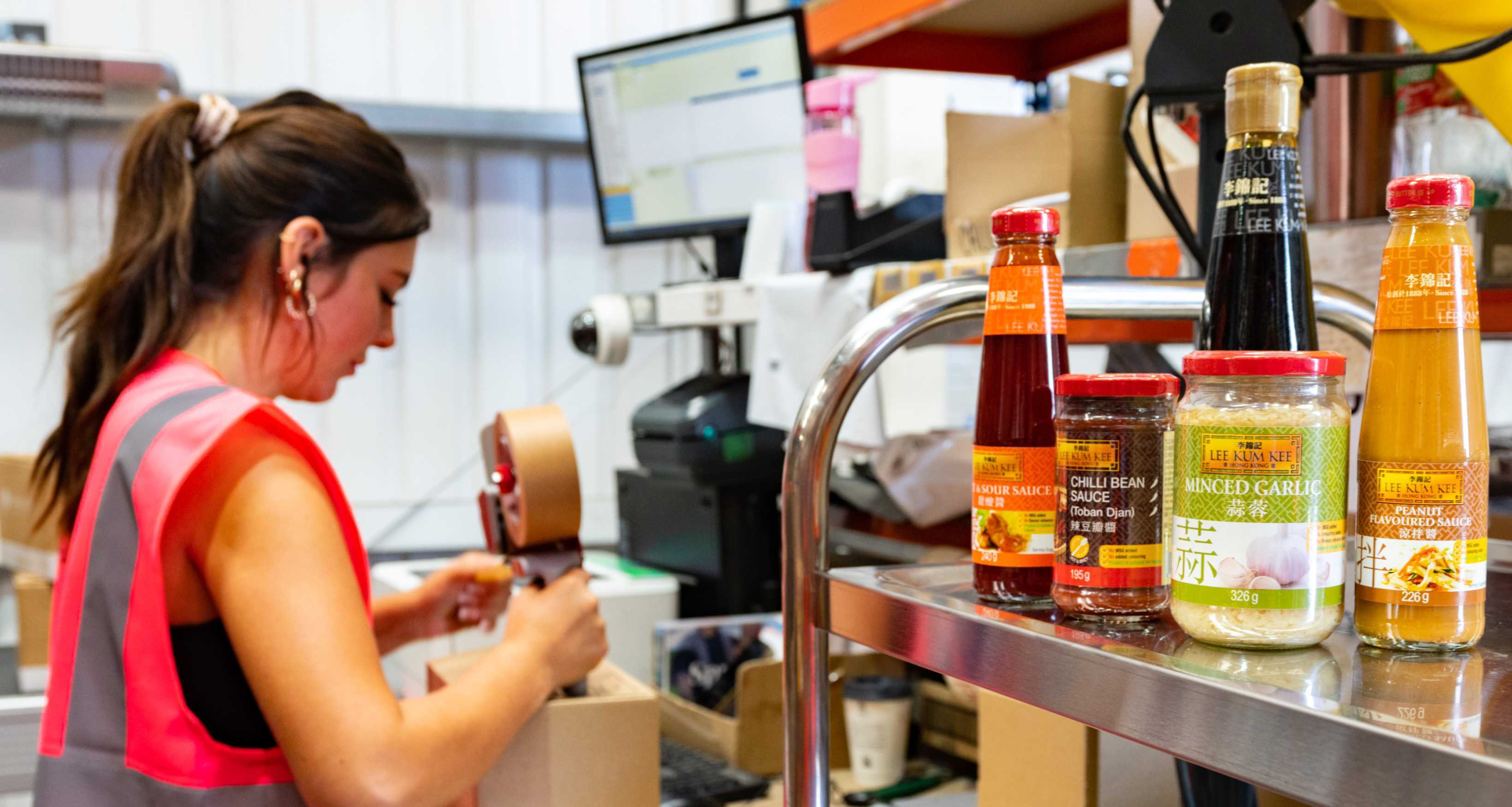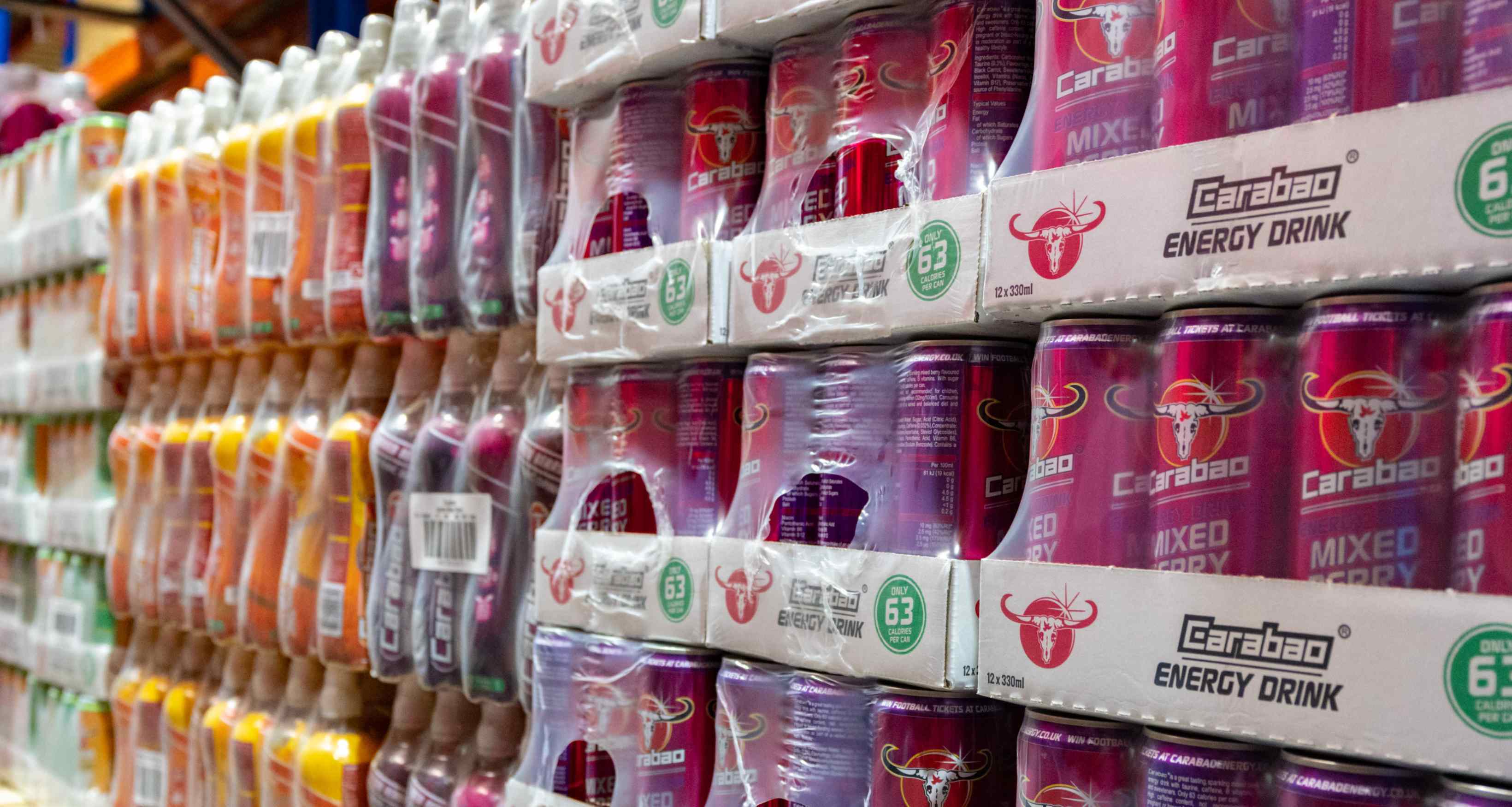Discover how businesses can efficiently manage both B2B and DTC logistics operations seamlessly with a single 3PL logistics provider. Explore strategies, benefits, and best practices.
Sector Insights: How Food and Beverage navigate the dual challenge of DTC and B2B service consistency

Download your copy of the OmniDisruptors Report.
Lessons from the brands redefining retails in the omnichannel era.
Download the reportWe recently posted a blog article on how to master the dual challenge of B2B and DTC with a single 3PL provider. But how exactly does an industry like food and beverage navigate the complexities of DTC and B2B service consistency? And in a world where digital transformation is causing upheaval in this sector (and being served on a platter), this is no longer a trend to jump on the bandwagon with; it’s a fundamental shift that demands strategic foresight and operational dexterity.
Below, we’ll delve into the unique challenges and opportunities this sector faces, emphasizing the growing importance of DTC sales, alongside traditional B2B relationships. We’ll also explore how brands can balance the differing demands of these two channels. We'll also highlight key strategies and real-world examples from our clients, such as Lee Kum Kee and Tonic Health, that demonstrate successful navigation of these challenges. It’s time to dig in.
The rise of DTC sales in food and beverage
Consumer behaviors are changing - and this is particularly apparent in the food and beverage industry. We’re hungry for convenience, we crave savings, and we savor the world of eCommerce. Consumers now expect to buy products directly from manufacturers or brands online, bypassing traditional retail options. This shift to DTC sales is particularly significant. The COVID-19 pandemic accelerated this trend, as lockdowns and health concerns pushed us to seek out online shopping options for our sustenance requirements - and for many, we haven’t looked back since.
Key drivers of DTC growth
- Consumer convenience: The convenience of home delivery and the ability to shop anytime has made DTC a tasty option for consumers. Brands like Gusto and HelloFresh have capitalized on this by offering meal kits that provide both convenience and quality. Our modern lives are hectic; why make things harder for ourselves?
- Brand control: By selling directly to consumers, brands can maintain better control over their product presentation, pricing, and customer experience. This direct relationship also allows for richer data collection and more personalized marketing strategies. This includes a wealth of data regarding browning and buying habits that you wouldn't get from a third-party seller or stockist. The ability to customize and personalize creates a more authentic experience for the customer - and we all like to feel special, don’t we?
- Innovation: DTC channels enable brands to introduce new products quickly and offer customized options to consumers. For instance, you could create personalized drink flavors or packaging that appeal to niche markets, or test new product lines with smaller manufacturing runs before launching to a wider market. Feels too much like hard work? Your customers wouldn’t agree - and are likely to look at your competitors for this level of customization, if they don’t receive it from you. Seller beware.
Hungry for more: why B2B relationships are so important?
While DTC sales are growing (just like our hunger pains), B2B relationships remain the backbone of the food and beverage industry. Retailers, restaurants, and many other businesses rely on consistent and reliable supply chains to meet their operational needs. Maintaining strong B2B relationships is essential for the following reasons:
- Volume sales: B2B transactions often involve larger order sizes, providing significant revenue streams for food and beverage companies. Size shouldn’t matter - but it does when it comes to B2B sales.
- Market reach: B2B partnerships enable you to reach wider markets through established retail and distribution networks and penetrate target audience groups already captured by the retailer/stockist to drive further demand in the long-run.
- Stability: Long-term contracts with business clients offer financial stability and predictable demand, which is crucial for production planning and inventory management.

Milking DTC and B2B: Unique challenges
Navigating the dual demands of DTC and B2B channels presents unique challenges for food and beverage companies. And these aren’t just limited to one area; they span across various operational aspects, from packaging and order fulfillment to delivery expectations. Just like a buffet, there are multiple different elements and considerations to take into account; and, if you’re strategic about it, you can really get your fill. Delicious.
Packaging requirements
- DTC packaging: DTC orders often require attractive, consumer-friendly packaging that enhances the unboxing experience. We eat with our eyes, so for consumers, this makes absolute sense. It’s also got to be sturdy enough to protect products during shipping. Brands like Tonic Health have excelled in creating visually appealing and functional packaging that resonates with their customers (yes, we might be biased because they’re our client, but they’re also eating it up).
- B2B packaging: Let’s face it, B2B packaging focuses on efficiency and bulk delivery. It doesn’t need to be pretty or aesthetically pleasing; it simply has a job to do and that job is to get the products from A to B. The packaging must facilitate easy handling, storage, and transportation. For example, our client, Mitch, a supplier of premium ingredients, uses industrial-grade packaging that meets the rigorous demands of its B2B clients.
Order sizes
- DTC orders: These are typically smaller and more frequent. This requires a fulfillment system that can handle high volumes of individual orders, each with potentially different specifications. Investing in scalable warehousing and automation technologies can help manage this efficiently. We’re proof of that.
- B2B orders: These involve larger quantities and less frequent deliveries. The fulfillment process for B2B orders emphasizes bulk handling, palletisation, and logistics efficiency. Ensuring timely and accurate delivery is crucial to maintaining B2B relationships.

Delivery expectations
- DTC deliveries: Consumers expect fast, reliable, and, more often than not, free delivery. They also expect options, whether that’s standard, next-day, and sometimes even same-day delivery. Meeting these expectations requires a robust last-mile delivery network and the ability to track shipments in real-time. Services like Amazon Prime have set high standards for delivery speed that other brands must strive to meet. The main objective here is to ensure you’re not biting off more than you can chew. Get the basics right before you start offering a plethora of choice.
- B2B deliveries: These focus on punctuality and dependability, often with scheduled deliveries that align with the business clients’ operational needs. Just like Gordon Ramsey’s kitchen, you require precise delivery windows to ensure your operations run smoothly, making logistical coordination essential. It’s not just your own timelines that matter, but everyone else’s. B2B deliveries, especially with larger retailers, expect robust processes to be followed with documentation. It's often done by the brand in the first instance when this channel is activated, but can prove time-consuming and complex, especially when trading in multiple countries. This is where TrueCommerce comes in.
It’s a balancing act
Successfully managing the dual challenge of DTC and B2B service consistency in the food and beverage world requires strategic planning and the adoption of innovative solutions. It might feel like a case of spinning plates filled with piping hot, Michelin-starred delicacies, but we digress. Here are some key strategies to make sure you don’t stew in your own juices:
Tech solutions
- Integrated order management systems: Implementing a unified order management system that can handle both DTC and B2B orders seamlessly is critical. This system should provide real-time visibility into inventory levels, order statuses, and delivery tracking.
- Automation and robotics: Leveraging automation in warehousing and fulfilment can significantly enhance efficiency. Automated picking and packing systems can handle high volumes of DTC orders, while robotics can manage bulk B2B orders. Just ensure you’re partnered with a provider who can offer these options to you… (i.e. us).
- Advanced analytics: Utilizing data analytics can help you forecast demand accurately, optimize inventory levels, and personalize marketing efforts. Predictive analytics can also improve supply chain resilience by identifying potential disruptions.
Flexible fulfilment options
- Omnichannel fulfillment: Implementing an omnichannel fulfillment strategy allows you to service all channels through one central partnership or location - it essentially consolidates many complex channels into one uniform route-to-market with one dashboard/view of everything. This approach increases flexibility and reduces delivery times.
- Micro-fulfillment centers: Establishing micro-fulfillment centers closer to urban areas can speed up DTC deliveries and reduce shipping costs. These centers can also serve as hubs for local B2B deliveries.
- Partnerships with 3PL providers: Collaborating with 3PL providers like fulfilmentcrowd can enhance fulfillment capabilities. We offer scalable solutions that can adapt to fluctuating demand, ensuring consistent service levels for both DTC and B2B channels. Pretty tasty if you ask us.
The proof is in the pudding: Real-world examples
Tonic Health
Tonic Health, a health drink brand, exemplifies how a company can successfully navigate the dual challenge of DTC and B2B service consistency. By leveraging attractive, functional packaging, Tonic Health appeals to its DTC customers who value the product's aesthetics and usability. The company has also invested in a robust eCommerce platform that integrates with its fulfillment operations, ensuring seamless order processing and timely deliveries.
On the B2B front, Tonic Health maintains strong relationships with retail partners by offering efficient bulk packaging and reliable delivery schedules. The company uses data analytics to forecast demand accurately and optimize inventory levels, ensuring they can meet the needs of both individual consumers and business clients.
Lee Kum Kee
Lee Kum Kee, a Hong Kong-based brand renowned for its range of Asian sauces, demonstrates effective management of both DTC and B2B channels. Traditionally distributing their products through supermarkets, Lee Kum Kee ventured into the DTC space to expand market reach and cater to evolving consumer preferences.
In partnership with fulfilmentcrowd, Lee Kum Kee successfully launched its DTC channel in the UK and EU, providing customers with a convenient online shopping experience. The company uses fulfilmentcrowd’s technology to make data-driven product selections and pricing decisions, ensuring high service standards. Popular gift boxes, a major revenue driver, are seasonally updated and dispatched within 24 hours from BRC-standard warehouses.
On the B2B front, Lee Kum Kee maintains robust relationships with retailers by offering bulk packaging solutions and reliable delivery schedules. fulfilmentcrowd’s integrated platform with Shopify ensures accurate inventory levels, fast order processing, and seamless logistics, which are crucial for both DTC and B2B operations. This dual-channel approach supports Lee Kum Kee’s growth and brand loyalty across diverse markets.
By leveraging advanced technology solutions and flexible fulfillment strategies, both Tonic Health and Lee Kum Kee exemplify how food and beverage companies can navigate the complexities of DTC and B2B service consistency, ensuring sustained success in the dynamic marketplace.
.jpg?width=1500&height=1500&name=Tonic%20health%20(1).jpg)
.jpg?width=1500&height=1500&name=Lee%20Kum%20Kee%20(1).jpg)
If you’re looking to deliver consistency and navigate the dual challenge of DTC and B2B in the food and beverage industry, look no further than fulfilmentcrowd. Just like the intricate dance between flavors on a plate, DTC and B2B orders require the same level of attention and analysis. Luckily for you, we already have our Michelin star in food and beverage fulfillment.
Looking for more industry insights?
Check out our other recommendations just for you!
See allDiscover how businesses thrive in the B2B sharing economy. Learn strategies to transform gig operations into great successes with expert insights and real-world examples.
Learn how Ultimate Products partnered with fulfilmentcrowd to integrate their supply chain, scale EU operations, and optimize fulfillment across B2B and DTC channels. Discover their success and future plans for expansion.


.jpg?width=300&name=Dublin-warehouse%20(1).jpg)
.webp?width=300&name=Omnidistruptors-mockup1%204%20(1).webp)
.jpg?width=300&name=GAAstore-lifestyle-image%20(2).jpg)

 By Alice Davies
By Alice Davies




